Michihiro Shintani
Systematic Unsupervised Recycled Field-Programmable Gate Array Detection
Apr 05, 2022


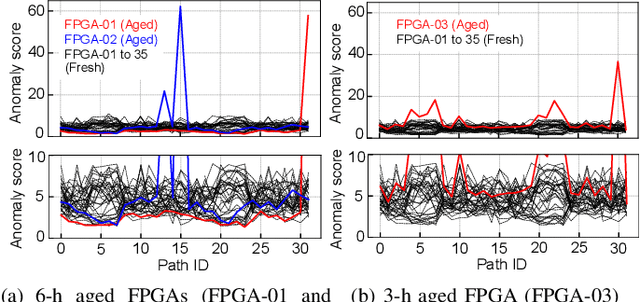
Abstract:With the expansion of the semiconductor supply chain, the use of recycled field-programmable gate arrays (FPGAs) has become a serious concern. Several methods for detecting recycled FPGAs by analyzing the ring oscillator (RO) frequencies have been proposed; however, most assume the known fresh FPGAs (KFFs) as the training data in machine-learning-based classification. In this study, we propose a novel recycled FPGA detection method based on an unsupervised anomaly detection scheme when there are few or no KFFs available. As the RO frequencies in the neighboring logic blocks on an FPGA are similar because of systematic process variation, our method compares the RO frequencies and does not require KFFs. The proposed method efficiently identifies recycled FPGAs through outlier detection using direct density ratio estimation. Experiments using Xilinx Artix-7 FPGAs demonstrate that the proposed method successfully distinguishes recycled FPGAs from 35 fresh FPGAs. In contrast, a conventional recycled FPGA detection method results in certain misclassification.
Accelerating Parameter Extraction of Power MOSFET Models Using Automatic Differentiation
Oct 22, 2021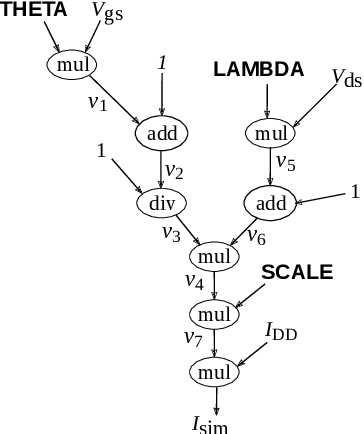
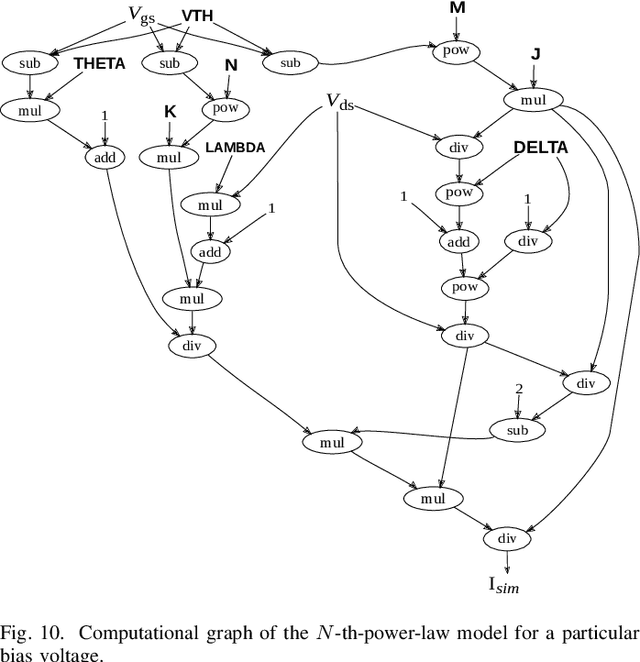
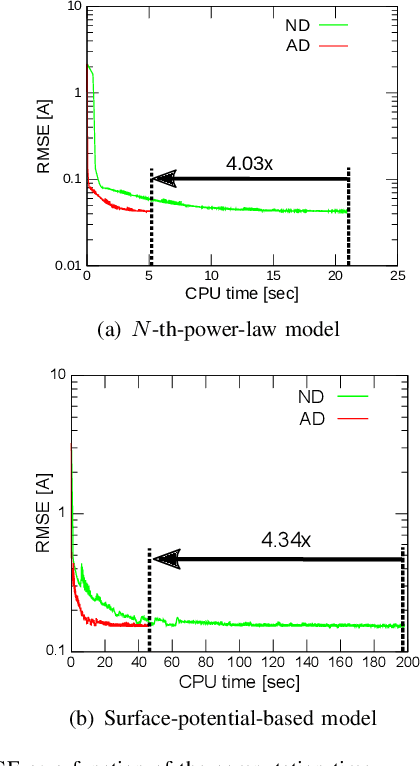
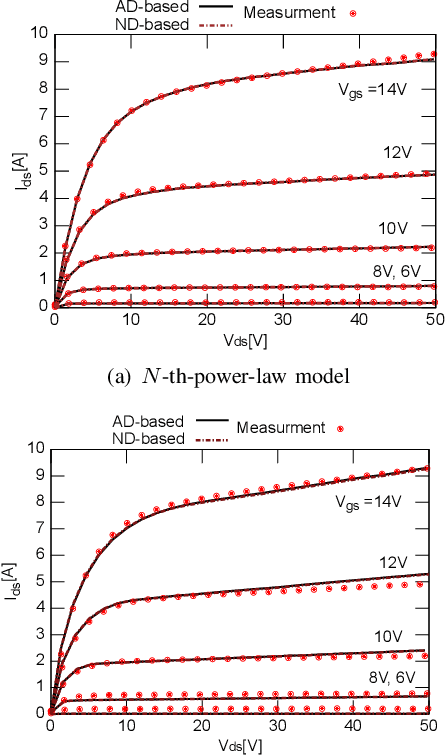
Abstract:The extraction of the model parameters is as important as the development of compact model itself because simulation accuracy is fully determined by the accuracy of the parameters used. This study proposes an efficient model-parameter extraction method for compact models of power MOSFETs. The proposed method employs automatic differentiation (AD), which is extensively used for training artificial neural networks. In the proposed AD-based parameter extraction, gradient of all the model parameters is analytically calculated by forming a graph that facilitates the backward propagation of errors. Based on the calculated gradient, computationally intensive numerical differentiation is eliminated and the model parameters are efficiently optimized. Experiments are conducted to fit current and capacitance characteristics of commercially available silicon carbide MOSFET using power MOSFET models having 13 model parameters. Results demonstrated that the proposed method could successfully derive the model parameters 3.50x faster than a conventional numerical-differentiation method while achieving the equal accuracy.
 Add to Chrome
Add to Chrome Add to Firefox
Add to Firefox Add to Edge
Add to Edge